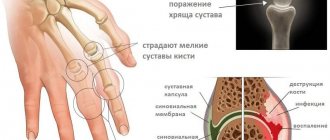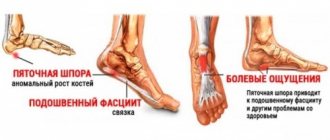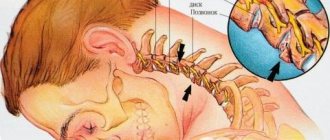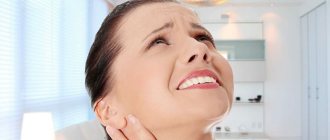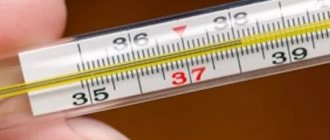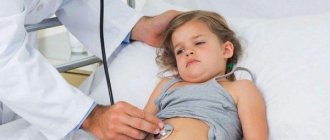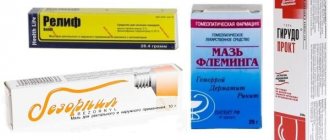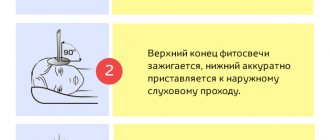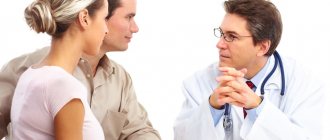Treatment of hemorrhoids at home in women is carried out in cases where it is not possible to visit a doctor, or if the disease develops only in the initial stage and is not chronic. Hemorrhoids in women are quite common and are caused not only by general causes, but by specific circumstances, such as pregnancy and childbirth.
Description of the disease
Hemorrhoids are enlarged hemorrhoids, which in the last stages of the disease can prolapse beyond the anus. This disease is accompanied by itching, burning, pain, bleeding and other unpleasant symptoms.
The reason for the expansion of hemorrhoids is poor circulation. This, in turn, may be caused by the following factors:
- sedentary lifestyle or, conversely, excessive stress;
- regular standing (often associated with profession);
- unhealthy diet, i.e. eating fatty, salty, fried foods;
- overweight;
- anal sex;
- smoking or drinking alcoholic beverages;
- pregnancy and postpartum period;
- stress;
- prolonged constipation or diarrhea;
- tumors and inflammation in the rectum, etc.
The above are just risk factors. Hemorrhoids can also be caused by genetic predisposition, internal changes in the body that do not depend in any way on external factors.
Causes of hemorrhoids in women
The main causes of hemorrhoids in women
In modern life, many women are not always able to lead a healthy lifestyle: a full lunch often has to be replaced with a quick snack, and walking has to be replaced by a trip by car or public transport due to limited free time. All this invariably leads to deterioration of the gastrointestinal tract and poor circulation. The causes of hemorrhoids in women can be:
- Poor nutrition. Eating junk food such as fast food, chips and carbonated drinks, and not getting enough fiber from fresh vegetables and fruits, lead to digestive problems and, as a result, constipation, which can cause hemorrhoids.
- Sedentary lifestyle. Sedentary work, reluctance or inability to perform regular physical activity in the form of visiting the gym or performing gymnastics, refusal to walk in favor of traveling by transport lead to impaired blood circulation in the pelvic area, causing blood stagnation and creating conditions for the development of hemorrhoids.
- Bad habits. Smoking, excessive consumption of alcohol and energy drinks also lead to disturbances in the circulatory system and can also cause blood clots, which poses an additional risk for hemorrhoids.
- Great physical activity. Heavy physical labor, especially associated with lifting weights, creates additional pressure in the pelvic area and can provoke the formation of hemorrhoids.
- Pregnancy and childbirth. During pregnancy, the growing fetus places continuous pressure on the abdominal and pelvic organs, causing decreased blood flow and flow and placing additional stress on the rectal muscles. During childbirth, hemorrhoidal bumps often form as a result of excessive pressure during pushing.
It is undesirable to treat hemorrhoids without consulting a doctor
We recommend reading a detailed and informative article by our specialist about modern methods of treating hemorrhoids.
Also, be sure to study our author’s tips and recommendations on how to cure hemorrhoids as quickly and effectively as possible.
Another useful article talks about how to get rid of hemorrhoids without any problems or hassle. Helpful tips will be useful to everyone.
How to treat hemorrhoids at home? This disease belongs to the category of those that develop rapidly and move into those stages when surgical intervention is no longer possible. This is why proctologists and phlebologists do not recommend self-medication.
Many recipes that are presented in non-medical reference books or on the Internet may not be effective at a particular stage of the disease. They may not only fail to improve the patient’s condition, but may also lead to more serious consequences. If you notice the first signs of hemorrhoids, be sure to consult a specialist.
When treating hemorrhoids at home, the patient takes full responsibility for the outcome of the procedures. Don't risk your health and use proven methods to get rid of diseases.
What is the danger of hemorrhoidal disease?
The main insidiousness of hemorrhoids is its ability to hide many serious pathologies, including oncological ones, under its mask. In addition, hemorrhoidal disease can become complicated, which sometimes poses a threat to human health and life. The danger is that complications of hemorrhoids appear over time (from several months to several years), that is, they force patients to see a doctor already in advanced stages of the disease.
Complications in men and women have their own characteristics. The most serious complications are stage 3-4 hemorrhoids with unreducible hemorrhoids.
For men, the dangerous consequences of untreated or improperly treated hemorrhoids occur, according to statistics, more often in the form of:
- proctitis and paraproctitis, cryptitis;
- thrombosis of the hemorrhoid;
- strangulation with necrosis – Fournier’s gangrene (necrosis of scrotal tissue);
- age-related decline in erectile function, loss of libido, reproductive dysfunction;
- secondary infection with creeping inflammation spreading to nearby tissues, causing dermatitis, eczema, abscess formation, sepsis and even death.
Women are statistically more likely to experience:
- bleeding with the development of anemia (the situation is aggravated by blood loss during menstruation);
- thrombosis and strangulation of nodes;
- formation of anorectal fissures;
- itching due to dermatitis, eczema;
- the formation of varicose veins during pregnancy and childbirth with subsequent prolapse, strangulation, necrotization, and symptoms of intoxication.
The only way to avoid complications is to consult a doctor in a timely manner.
Drug treatment
How to treat hemorrhoids at home? The most popular method is the use of medications. They can not only normalize blood circulation and return hemorrhoids to their original state, but also eliminate pain and discomfort caused by the disease.
For drug treatment, various drugs are used: ointments and creams, suppositories, tablets. Let's consider them separately.
Pills
The most effective drugs against hemorrhoids are tablets. They fight not only the consequences of the disease, but also the causes of its occurrence. Tablets are capable of:
- eliminate pain syndrome;
- improve vascular tone;
- normalize blood circulation;
- eliminate itching and burning in the anus, etc.
The most popular drugs that will help cure hemorrhoids at home are:
- Detralex;
- Venarus;
- Phlebodia 600;
- Troxevasin.
Detralex
We recommend that you carefully study the detailed article about Detralex for hemorrhoids and the features of using these tablets.
The first drug that we will consider in the article is Detralex. It is rightfully considered the most common drug against the expansion of hemorrhoids. Its spectrum of action includes:
- increased vascular tone;
- increased blood inflow and outflow;
- reducing vascular fragility;
- elimination of discomfort and pain.
This drug acts only in the early stages of the disease. He is no longer able to improve the patient’s condition in the case where the hemorrhoids have fallen outside the anus.
Venarus
Venarus is an excellent alternative to Detralex, as it has similar properties. The only difference is the price. This drug is quite inexpensive, which explains its popularity.
Phlebodia 600
Like previous medications, it is classified as a venotonic. The properties of Phlebodia 600 are the following:
- improvement of lymphatic drainage;
- increased vascular tone;
- elimination of inflammatory processes;
- strengthening the walls of blood vessels.
Troxevasin
And the last drug is Troxevasin. It is able to relieve swelling in the anal area, reducing the permeability of the vascular walls.
These drugs affect blood circulation and the condition of blood vessels, so improper use can lead to serious consequences. You should not rely on quick treatment of hemorrhoids with pills. Be sure to consult a specialist.
You can find out how effective Troxevasin is for hemorrhoids and how to use it correctly by reading our expert’s article.
Ointments and creams
Treatment of hemorrhoids at home quickly and effectively is impossible only with the use of ointments and creams. But they can significantly increase the effect of medications, as they contain active components that block pain, reduce swelling, and eliminate itching and burning.
But it is worth understanding that such remedies have only a local effect and only temporarily relieve the patient from discomfort, without fighting the causes of the disease. Home treatment of hemorrhoids with ointments and creams will not be beneficial at serious stages of development of the disease.
The most common local remedies include:
- Relief;
- Troxevasin gel;
- Proctosan;
- Bezornil;
- heparin ointment, etc.
Incorrectly selected ointments and creams can only intensify the symptoms of the disease (for example, due to allergies or individual intolerance to the active components of the products). Before using them, be sure to consult a specialist.
- The most popular and effective ointments for hemorrhoids are presented in the review prepared by our specialist proctologist.
- We also recommend that you study a detailed review of hemorrhoid creams, which describes the most popular and effective soft dosage forms.
Candles
Effective remedies against the expansion of hemorrhoids are suppositories. They are introduced internally, which allows the components to act more effectively on the affected areas.
Patients are recommended to use the following suppositories.
- Hepatrombin G. It belongs to the drugs of combined action, i.e. it eliminates inflammation, reduces pain and itching in the anal area, improves blood circulation, relieves swelling, reduces blood clots, etc. For such a range of actions, the drug has a ridiculous cost - about 180 rubles for 1 package. Despite their high effectiveness, these suppositories have their contraindications: syphilis, allergies and individual intolerance to active substances, tuberculosis, skin diseases, etc.
- Gepasolone. These suppositories are very similar in their properties to the previous ones: they increase vascular tone, stimulate blood circulation, eliminate pain, cool the damaged area, and promote the resorption of thrombotic nodes. The course of treatment with these suppositories is 7 days, but it can be doubled on the recommendation of a doctor.
- Nigepan. Budget-friendly, but no less effective suppositories that have a standard spectrum of action for a drug against hemorrhoids. A significant difference from many other suppositories is the absence of hormonal components in the composition. This determines the short list of contraindications and side effects.
- Procto-Glivenol. 1 such suppository per day is enough to reduce pain and locally improve the flow and flow of blood. Contraindications for use are pregnancy and various liver dysfunctions.
- Relief. These suppositories contain fish oil, which promotes accelerated healing of microcracks.
- With ichthyol. Ichthyol has pronounced anti-inflammatory, antibacterial and analgesic properties. Regular use of this drug will help relieve symptoms of the disease.
- Sea buckthorn. Sea buckthorn oil-based suppositories help not only eliminate burning and itching, but also quickly heal microcracks, which very often bring terrible discomfort.
- With propolis. Propolis, like ichthyol and sea buckthorn oil, is an excellent antiseptic. In addition, it has a pronounced cooling effect.
- Homeopathic. They contain small doses of medicinal herbs.
Symptoms
The photo shows external hemorrhoids
Hemorrhoids 3rd degree
Hemorrhoids 1st degree
External hemorrhoids 2nd degree
Hemorrhoids in women (see photo above) are characterized by the presence of corresponding symptoms. The pathological process is accompanied by:
- discomfort in the anal area;
- patients complain of severe itching and pain;
- internal hemorrhoids are accompanied by a sensation of the presence of a foreign body in the rectal area;
- with hemorrhoids, mucus or blood is released from the anus;
- During bowel movements, increased pain is observed.
If the pathological process is not treated in a timely manner, the appearance of cracks is diagnosed.
Photos of the initial stage of the disease
See below, in the photo the initial stage of the disease:
Figure 1: When examined in the early stages, a wound can be seen transverse to the anus.
Therapy with folk remedies
The above described medications that are prescribed by doctors and sold in any pharmacies. But how to cure hemorrhoids at home using only improvised means? In this case, therapy with folk remedies is suitable.
A detailed review of popular and effective folk remedies for hemorrhoids is presented in the article by our proctologist.
Homemade candles
As mentioned above, suppositories are one of the most effective remedies against hemorrhoids. You can make them yourself.
- Ice candles. To prepare them, decoctions of medicinal plants are frozen. Such suppositories should provide good pain relief and stop bleeding. But, unfortunately, their effect is only temporary; they are not able to fight the cause of the disease.
- Suppositories made from raw vegetables. A small piece of raw potato, beet or garlic is administered rectally at night. Such suppositories have a drying effect and relieve inflammation.
- Candles with honey. A small amount of honey should be wrapped in film and frozen. You can add aloe and sunflower oil to it. After freezing, remove the suppository from the film and administer it rectally at night.
- Candles made of wax and pine resin. Place beeswax and pine resin in a ratio of 4:1 in a water bath. When the components have completely dissolved, natural oils (sea buckthorn, sunflower, olive) can be added to the mixture. Form candles and freeze them. Inject rectally at night, after lubricating the anus with Vaseline or oil.
The shape of a homemade candle should be as close as possible to the pharmacy one. Only in this case will it be possible to achieve comfortable use.
Homemade ointments
Ointments can locally relieve pain, eliminate inflammation, improve blood circulation, and speed up wound healing. The most common homemade ointment is with the addition of propolis. Animal fat, preheated to room temperature, is mixed with propolis in equal proportions. The resulting product is applied locally to the problem area overnight and washed off in the morning with running water. This ointment can be slightly enriched with liquid vegetable oil, which will make its texture more enveloping.
The next ointment is with the addition of honey. Soft butter is mixed with honey (be sure to use only natural honey, without adding sugar or other ingredients).
Cabbage ointment is also an effective remedy. Fresh cabbage must be boiled in milk and cooled. Next, mix until smooth with bran (corn, wheat) crushed into pulp.
Sitz baths
Baths for hemorrhoids at home are very popular among patients, as they help quickly get rid of discomfort and acute pain. Doctors recommend taking such baths before bed to prolong the effect of the components.
Our specialist talks about what types of baths for hemorrhoids are, what ingredients can be used in such procedures and how to be treated correctly using this method.
We present recipes for the most effective baths against the expansion of hemorrhoids.
- With tea. A very simple but effective recipe. Tea can relieve inflammation, reduce pain, and stop bleeding. Preparing this bath is simple: brew loose leaf tea in three liters of hot water. Cool the liquid slightly. Reason for a sitz bath (will take 15-20 minutes). The bath steams and softens the skin well, which can make inserting the candle more comfortable.
- With chamomile. Chamomile has strong anti-inflammatory and antiseptic properties. This bath is actively used against many diseases, in particular against hemorrhoids. Brew dry chamomile (3-4 tablespoons) in 2-3 liters of hot water, cool the broth slightly.
- With potassium permanganate. Potassium permanganate is found in almost every home, and is most often used for poisoning. Not everyone knows that it is also effective for hemorrhoids. Dilute a small amount of potassium permanganate in 2-3 liters of water. Recommended water temperature is 35-40 degrees. Potassium permanganate will disinfect and slightly dry microcracks.
- With pine cones. This bath will stop bleeding from the anus. Boil a few tablespoons of shoots in 4-5 liters of water. Strain and cool slightly.
Baths are procedures that are beneficial only if special recommendations are followed.
- Choose the optimal bath water temperature. It should not be less than 25 and more than 40 degrees.
- Take baths 2-3 times a week. Less often - it will not give the desired results, more often - it can only aggravate the situation.
- After the bath, use an ointment or suppository for hemorrhoids. The decoctions themselves do not fight the cause of the disease. They are necessary only to eliminate discomfort and increase the effectiveness of other medications.
Microclysters
The next way to combat the disease is microenemas. The optimal volume of liquid for such procedures is 60 milliliters. The enema tip must be lubricated with oil or Vaseline. Inject rectally a few centimeters, squeeze out the contents, and then empty.
There are several recipes for microenemas.
- 50 milliliters of natural oil (castor, almond, sea buckthorn) per 1 liter of water.
- A decoction of rice, corn, starch.
- Chamomile decoction (5 grams per 1 liter of water).
- A decoction of strawberry leaves (1 tablespoon per 200 milliliters of water).
- Wormwood decoction. (1 tablespoon per 250 milliliters of water).
After a microenema, be sure to lubricate the anus with medicinal ointment or cream.
Treatment of hemorrhoids at home in women
Good ointments for hemorrhoids for women
When a disease such as hemorrhoids occurs, it is not always possible to visit a doctor with such a delicate problem. Moreover, young mothers who received such an illness during childbirth simply physically cannot tear themselves away from their newborn babies to visit a doctor. If we consider the disease in the initial phase or not too advanced hemorrhoids in women, then treatment at home is quite acceptable. For this treatment the following drugs are used:
- Ready-made medications sold in pharmacies without a prescription;
- Folk remedies for hemorrhoids for women, made at home.
Among the ready-made medicines in the pharmacy, you can freely purchase very effective remedies for hemorrhoids for treatment in women at home, in the form of ointments and suppositories. The most popular are Relief, Posterizan, Natalsid, suppositories with sea buckthorn oil, Heparin ointment, Hepatrombin G and many other effective drugs. When using this or that drug, you should remember that without consulting a qualified specialist, the medicine may not only not bring the expected effect, but also harm your health. Folk home remedies for hemorrhoids in women consist only of natural ingredients, but they also need to be used with caution and best after consulting a proctologist. At home, treatment of female hemorrhoids is also possible using lotions, healing baths, suppositories, and decoctions. But here are the most popular suppositories for hemorrhoids for home treatment in women:
- Potato candles. Potatoes have long been known as one of the most effective remedies in the fight against hemorrhoids. The recipe is very simple: make a candle from raw peeled potatoes and insert it overnight. The result is visible on the third day, and this home remedy for hemorrhoids in women should be used for ten days.
- Chamomile infusion candles. A chamomile decoction prepared from 1 tablespoon of raw materials and a glass of boiling water and infused for half an hour, after straining, is poured into the little finger of a rubber glove and placed in the freezer. Use as suppositories every 1 day for 2 months.
Diet
So, we have decided the question of how to treat hemorrhoids at home. But treatment will not bear fruit without a special diet. Eliminate from your diet fatty, fried, salty and other foods that can lead to the formation of blood clots.
Eat more fruits and vegetables, which normalize stool. Don't forget about unsaturated fatty acids (fish oil, avocados, nuts, flaxseed oil). Increase the amount of protein foods you consume.
Monitor the amount of fluid you consume. Avoid coffee, sweet carbonated drinks, and alcohol. Drink at least 2 liters of water per day.
Drugs that relieve symptoms of the disease
Treatment of hemorrhoids at home basically involves the use of tablets and external agents (suppositories, liniments) of different pharmacological groups. But the result of such therapy will be the relief of negative symptoms, without eliminating the root cause, that is, hemorrhoids will return again. Therefore, during remission, it is necessary to discuss with your doctor the issue of preventing relapse.
Treatment of hemorrhoids quickly and effectively with the help of diet, exercise therapy, tablets, and external agents is possible only in the early stages of the pathology. Therapy at home should be complex (mono-methods are not successful) and long-term.
For the prevention or latent course of hemorrhoidal disease
It is enough to follow a balanced diet with a predominance of fiber from fresh vegetables and fruits, an active lifestyle, adherence to the rules of intimate hygiene, and regular medical examinations.
At the slightest suspicion of the formation of hemorrhoids, systemic venotonics are prescribed, and in case of problems with stool, drugs that normalize the functioning of the digestive system are prescribed. The main drugs that tonic the vein wall are:
- Detralex (domestic analogue of Venarus) is a powerful phlebotonic based on hesperidin and diosmin, prescribed for any weakness of the veins. The drugs have the ability to normalize microcirculation, improve blood flow, and relieve congestion of the pelvic organs. Contraindication – individual sensitivity to the components of the product.
- Phlebodia 600 is a venotonic used for acute forms of hemorrhoids; it exhibits the ability to restore blood vessels, relieve inflammation, and relieve venous congestion. Contraindications – general for the group.
- Troxevasin is a drug with angioprotective, venotonic properties based on rutin, restores the valve apparatus of veins, improves the structure of capillaries, normalizes blood circulation, antioxidant, rejuvenates cells. It is prescribed with caution to patients suffering from pathologies of the digestive system. Troxerutin and Ascorutin act similarly.
- Antistax is a mild herbal venotonic with angioprotective properties based on grape leaves. Priority for the prevention of hemorrhoids.
Drugs that normalize stool include drugs Duphalac, Normaze, Fitomucil and the like.
Treatment of the initial stages of hemorrhoids is correlated with the prevailing symptoms. External medications are not used, with the exception of means to relieve periodic itching (if necessary) or dermatitis with copious mucus discharge from the anus. Then use:
- Anuzol and Neo-Anuzol in the form of suppositories based on belladonna, bismuth, zinc - drying microelements that relieve irritation, which simultaneously relieve inflammation and pain. Neo-Anuzol contains aniline dyes, iodine, and tannin, which enhance the antiseptic properties of the drug and, due to tannins, prevent irritation of nerve receptors that provoke itching.
- Proctosan is a suppository or ointment that, due to tannin, has tanning properties of the mucous membranes or dermis, and due to lidocaine, it relieves itching, burning, and pain during bowel movements. Anestezol suppositories act similarly.
- Relief Ultra suppositories based on shark liver oil with the addition of hormones have a strong anti-inflammatory effect, and zinc forms a protective film that protects the rectum mucosa from pathogenic microbes.
To relieve inflammation and pain
Treatment of acute or chronic hemorrhoids at home is always comprehensive; to relieve inflammation and pain, painkillers and anti-inflammatory drugs are prescribed, which are used carefully: they can thin the blood, which provokes bleeding of hemorrhoids and causes erosive processes in the digestive tract.
If pain occurs during defecation, add Diclofenac, Nimesulide, Ibuklin - NSAID tablets that can quickly relieve pain, inflammation, and pastiness.
Externally used:
- Detragel based on heparin and escin, tonics blood vessels, relieves pain, inflammation, resolves blood clots.
- Procto-Glivenol is a drug (suppositories, cream) made from a combination of an anesthetic and venotonic.
- Troxevasin ointment based on rutin is a phlebotonic with angioprotective properties. Analog – Troxerutin Vramed.
- Aurobin - suppositories, ointment with a hormonal additive that enhances the anti-inflammatory and analgesic effect. An analogue is Advantan ointment, suppositories, liniment - Ultraproct.
For bleeding nodes
Hemorrhoids, which can be stopped at home if bleeding occurs, are treated with the use of hemostatics that control the blood coagulation system, have anti-inflammatory properties, and regenerate the affected tissue.
If bleeding occurs:
- Vikasol is a tableted synthetic analogue of vitamin K with an antihemorrhagic effect and normalizes blood clotting.
- Dicynone is a drug with hemostatic properties based on etamsylate. Increases vascular permeability, resistance of capillaries to negative influences, normalizes microcirculation, stimulates thrombus formation in places of damage to the vascular wall.
- Proctonis - tablets based on shark cartilage with laxative properties, increase blood clotting, relieve pain, inflammation, regenerate tissue, relieve spasticity in the anus, and prevent secondary infection.
Among external preparations:
- Natalsid suppositories made from brown algae, which block bleeding and soften stool;
- Suppositories Relief with a vasoconstrictor effect, Relief Advance with an analgesic component;
- Anuzol, Neo-Anuzol - hemostatic agents, dry out nodes;
- Propolis - propolis-based suppositories;
- Proctosedyl - rectal capsules with horse chestnut escin;
- Olestezin suppositories are a multicomponent drug with a predominantly hemostatic effect.
For anorectal fissures
Only acute anal fissures can be treated conservatively at home. Chronic ones are subject to surgical excision. The basis in the complex treatment of hemorrhoids is the normalization of stool, since soft stool eliminates trauma to the rectal mucosa.
In addition, reparative liniments are prescribed: 0.4% nitroglycerin ointment, 1% isosorbitol nitrate, 2% nifedipine ointment or diltiazem gel. You can use glycerin suppositories, Salofalk, Stellanin ointment, Anestezol.
If there is resistance to therapy, the issue of further treatment is resolved with a specialist.
With node thrombosis
Thrombosis of a hemorrhoidal cone can be treated at home with complex therapy: tablets, suppositories, heparin-based ointments. A long-term therapeutic effect is impossible, and the risk of relapse is high. Periodic monitoring of blood clotting is necessary.
They use: tableted venotonics (Detralex, Venarus, Troxevasin), anti-inflammatory (Diclofenac, Nise), laxatives (Bisacodyl, Senna, Duphalac).
Externally used: anticoagulants (Heparin ointment, Hepatrombin and Hepatrombin G, Geparoid Zentiva - a synthetic analogue of heparin, Lyoton 1000), painkillers (Procto-Glivenol, Proctosedil), phlebotonics (Essaven-gel, Venoruton-gel) astringents (Proctosan, Anuzol).
In case of secondary infection
Secondary infection involves the use of external antiseptics, first of all. At high temperatures, signs of an infectious process - pathogenetic treatment with antibiotics after determining the type of pathogen and its sensitivity to antibacterial therapy.
The main external antiseptics are:
- Vishnevsky ointment is a tar-based drug with antiseptic, immunomodulatory, anti-inflammatory properties (a time-tested remedy).
- Levomekol is an ointment with a pronounced antiseptic and anti-inflammatory effect.
- Ichthyol ointment with sulfur in its composition and strong antiseptic properties.
- Bezornil is a combination of artificial and natural ingredients.
- Fleming's ointment is a mild homeopathic remedy with an antiseptic, drying effect.
Gymnastics for hemorrhoids
How to cure hemorrhoids at home with gymnastics? This is possible only in the early stages of the development of the disease. During periods of bleeding, severe pain, high body temperature, gymnastics and any other physical activity are prohibited.
Give preference to swimming and easy walking. Do intimate gymnastics, which will increase the tone of hemorrhoidal vessels. Seated yoga and light abdominal exercises are also recommended.
Want to learn more about exercise? Read our specialist’s article about the rules for doing gymnastics for hemorrhoids.
Stages of hemorrhoids: signs and photographs
In the process of development of chronic hemorrhoids, it is customary to distinguish four stages. This classification is based on the severity of symptoms and the presence of hemorrhoidal prolapse.
First stage: what does incipient hemorrhoids look like in the photo?
As we have already said, the first stage of the disease can only be determined by a professional, since hemorrhoids are located inside the rectal canal and have not yet fallen out.
At this stage, few people seek medical help, because the symptoms of hemorrhoids are not expressed, and patients either do not notice them or attribute them to other causes. In addition, this stage may begin asymptomatically.
The first thing patients may notice is a sensation of a foreign body inside the anal canal or a feeling of incomplete bowel movement after bowel movement.
Sometimes a hemorrhoidal lump can be injured by a hard canal, as a result of which drops of blood will be noticeable on the toilet paper. But some patients are not afraid of even this manifestation of the disease.
Second stage: how does it manifest?
At the second stage, the above-described symptoms of hemorrhoids are supplemented by prolapse of hemorrhoids during defecation, which are immediately set back.
In photographs, such nodules look like red tumor-like formations of small size and soft consistency.
Third stage: symptoms and image of prolapsed hemorrhoids
The third stage is already considered an advanced form of hemorrhoids, since at this stage of the disease the nodes fall out not only during bowel movements, but with strong coughing, intense laughter, sneezing, deep squats or heavy lifting.
Also, a distinctive feature of the third stage is that the node can no longer return to its place on its own, so patients have to manually insert it into the rectum.
Prolapse of hemorrhoids is accompanied by severe pain. Also, the node may become pinched in the anus, which requires immediate contact with a proctologist, since this complication threatens its necrosis.
Pay attention to the picture shown, it perfectly depicts prolapsed hemorrhoids.
Stage four: pictures of advanced hemorrhoids
The fourth stage of hemorrhoids is the most severe form of the disease, since hemorrhoids are almost always located outside the rectum and cannot be set back even manually. In addition, the course of the fourth stage is often complicated by thrombosis, strangulation and necrosis of hemorrhoidal cones.
See what hemorrhoids look like in the photo with stage 4 hemorrhoids.
At this stage of the disease, the pain becomes constant and so severe that patients cannot sit, stand, or lie, and rectal bleeding can begin from the slightest trauma to the nodes.
Prevention methods
If you have a genetic predisposition to this disease or you are engaged exclusively in standing or sedentary work, you cannot do without prevention. The principles have long been well known.
- Quitting bad habits (smoking, drinking alcohol).
- Reducing excessive physical activity.
- Playing sports in the absence of physical activity.
- Normalization of the diet, avoidance of fatty foods.
- Regularly performing intimate gymnastics to strengthen the walls of blood vessels.
- Avoid anal sex if it causes discomfort.
- Yoga classes.
Diet and nutritional habits
Treatment of hemorrhoids is impossible without diet therapy. All fatty, fried, salty, pickled, baked goods, strong coffee, and alcohol are excluded from the patients’ diet The daily menu includes fiber, bran, and whole grain bread. Omega-3 acids are required: vegetable oils, nuts, seeds, avocados, seafood, wheat germ, seaweed. Protein foods should be light: lean meat, poultry, fish. You should drink at least 2 liters of water per day (40 ml per kilogram of weight).
Surgery
At the first to third stages of hemorrhoids, minimally invasive methods for treating hemorrhoids can be used, the advantages of which are high efficiency, painlessness, low trauma and rapid recovery.
Modern methods of surgical treatment of hemorrhoids include sclerotherapy, cryodestruction, photocoagulation, laser coagulation and disarterization of hemorrhoids, as well as their ligation with latex rings.
Radical operations - hemorrhoidectomy and Longo's operation are indicated for last-stage hemorrhoids, since conservative treatment and minimally invasive interventions will be powerless in this case.
During hemorrhoidectomy, the entire hemorrhoid is removed and plastic surgery of the rectal mucosa is performed. During Longo's operation, the nodes are pulled inside the rectal canal by removing part of the mucosa and stitching its edges, and after a certain period of time they collapse, since the blood circulation in them has been stopped.
After the operation, if the patient follows the recommendations of the attending doctor, hemorrhoids will no longer appear. You can also see what hemorrhoids look like after surgery in the presented photos.
Basic treatment methods
Treatment of hemorrhoids will be successful only if the causes that caused it are eliminated. If you do not level out the risk factors, the disease will remind itself again and again. And even the most expensive medications and techniques will not lead to the expected positive dynamics.
Drug therapy
Treatment of hemorrhoids with medications is effective in the first stages of the disease, when the anatomical and physiological changes in the intestines and blood vessels are still reversible.
The main purpose of using pharmacological agents is to reduce unpleasant symptoms, burning, itching, pain, stop bleeding and accelerate the healing of anal fissures.
Local remedies - suppositories and ointments - have a good effect. For bleeding, proctologists prescribe:
- Hepatrombin G;
- troxevasin ointment;
- heparin ointment;
- Proctosedyl and others.
Analgesic and anti-inflammatory effects are exerted by:
- Relief;
- Proctosan;
- Anuzol;
- Aurobin;
- Ultraproct.
Systemic treatment of hemorrhoids involves the use of injections and oral administration:
- hormonal drugs - corticosteroids:
- non-steroidal anti-inflammatory drugs;
- blood thinners for thrombosed hemorrhoids;
- medications to stop bleeding;
- means that strengthen the walls of blood vessels;
- restorative drugs.
Minimally invasive techniques
It is preferable to treat progressive hemorrhoids with modern gentle methods:
- sclerotherapy - the introduction of a special drug into hemorrhoids, which promotes the adhesion of vascular walls and the resorption of cones (read more about sclerotherapy for hemorrhoids);
- ligation - ligation of arteries supplying inflamed hemorrhoids, which leads to their gradual drying out and death;
- infrared photocoagulation - laser treatment of hemorrhoids, layer-by-layer burning of nodes with simultaneous cauterization of the resulting wound;
- cryotherapy – exposure of nodules to low temperatures, freezing of nodes with liquid nitrogen.
Minimally invasive operations have a number of advantages: they are performed with minimal blood loss, most often under local anesthesia, and allow for stable results and rapid recovery of the patient.
Radical operations
Radical surgical treatment is used for advanced hemorrhoids, when medication and minimally invasive methods are unable to help.
- The Milligan-Morgan technique is the excision of hemorrhoids with an electric knife, followed by cauterization of the dissected tissue.
- Longo's operation is the removal of sections of the mucous membrane of the upper rectum, due to which the nodular formations are pulled into the intestine.
Having an idea of why advanced hemorrhoids occur, you can avoid traumatic surgery and serious complications.
Hemorrhoids - causes, symptoms and treatment, photos
Hemorrhoids are dilation of the blood vessels of the rectum. Hemorrhoidal veins are located in the lower area of the rectum just above the anus.
Sometimes they swell when the veins dilate and their walls become stretched, thinned, and irritated by the passage of stool. Hemorrhoids are classified into two main categories:
- Internal hemorrhoids
- External hemorrhoids
Internal hemorrhoids
Internal hemorrhoids are located inside the rectal mucosa and are not felt unless they are significantly enlarged. They are usually painless and their presence is recognized by the presence of bleeding during bowel movements. Sometimes internal hemorrhoids prolapse or protrude beyond the anus. In this case, the patient can feel it. Prolapsed hemorrhoids can cause pain, since the anus is well innervated by sensory nerve fibers. Prolapsing hemorrhoids, as a rule, return to the rectum on their own; if this does not happen, they can be carefully pushed into place.
External hemorrhoids
External hemorrhoids are located under the skin that surrounds the anus (below the internal hemorrhoids). It is felt by the patient and may cause itching, pain or bleeding during bowel movements. If external hemorrhoids prolapse outward (usually during bowel movements), the patient may feel them. Prolapsed hemorrhoids can sometimes form blood clots, which lead to a very painful condition called hemorrhoidal thrombosis. If external hemorrhoids become thrombosed, the nodes become purple or blue and very painful. This condition goes away on its own within a few weeks. If the pain is unbearable, the doctor can remove the clot from the hemorrhoid, which will stop the suffering.
Everyone has hemorrhoids
Although most people think that hemorrhoids are not normal, everyone has them. Only if they increase to the point of causing problems are they considered a pathology or disease.
Although everyone gets hemorrhoids, they increase in size and cause serious problems in about 4% of the population. Hemorrhoids, which cause problems, are found equally in men and women, and their prevalence is most pronounced between the ages of 45 and 65 years.
What causes hemorrhoids?
Researchers don't know exactly what causes hemorrhoids. It is likely that excessive intra-abdominal pressure causes the veins to swell, blocking the flow of blood from them. These veins then become sensitive to irritation. High blood pressure can be caused by obesity, pregnancy, prolonged standing or sitting, straining during bowel movements, coughing, sneezing, vomiting, and holding your breath during physical exertion.
Hemorrhoids and nutrition
Diet is believed to play a central role in the occurrence—and prevention—of hemorrhoids. People who consistently eat fiber-rich foods are less likely to develop hemorrhoids, while people who eat a diet high in processed foods have an increased risk of developing them. A diet low in fiber or inadequate water intake can cause constipation, which can contribute to the development of hemorrhoids in two ways:
- contributes to excess tension during bowel movements;
- aggravates hemorrhoids, as hard stool irritates the hemorrhoidal veins.
What are the symptoms of hemorrhoids?
The most common symptom and sign of hemorrhoids is painless bleeding. Bright red blood may be present on the outside of the stool, on toilet paper, or dripping into the toilet. Bleeding usually stops on its own. Bleeding during bowel movements is not normal and should lead to a visit to the doctor. Although hemorrhoids are the most common cause of bleeding during bowel movements, there may be other causes, including inflammatory bowel disease, infectious diseases and tumors.
The symptoms of internal and external hemorrhoids are described below.
Stages of hemorrhoids
To conveniently describe the severity of internal hemorrhoids, many doctors use a classification system:
- Stage 1 hemorrhoids: hemorrhoids bleed but do not fall out.
- Stage 2 hemorrhoids: hemorrhoids fall out and reduce on their own (with or without bleeding).
- Stage 3 hemorrhoids: hemorrhoids fall out and are pushed into the anal canal using a finger.
- Stage 4 hemorrhoids: constant prolapse of hemorrhoids along with the rectal mucosa, which cannot be reduced into the anal canal; thrombosed hemorrhoids.
Symptoms of prolapsing internal hemorrhoids
Prolapse of internal hemorrhoids occurs when they swell and move out of their location in the rectum, through the anus. In the anal canal, hemorrhoids are traumatized by the passage of stool, especially by the passage of hard stool, which is observed with constipation.
This trauma can cause bleeding and pain. The presence of stool, inflammation and constant moisture can lead to anal itching, and sometimes to a constant feeling of the urge to defecate. Prolapsed hemorrhoids, as a rule, return on their own to the anal canal or rectum, or can be reset with a finger. But the hemorrhoids fall out again during the next bowel movement.
Symptoms of thrombosed external hemorrhoids
External hemorrhoids may feel like bulges in the anal area, but they typically cause few of the symptoms that are typical of internal hemorrhoids. External hemorrhoids can cause problems when blood clots form in them. Their thrombosis is very painful and often requires medical attention. Thrombosed hemorrhoids can heal to form a scar, which can complicate rectal hygiene or irritate the anus.
How are hemorrhoids diagnosed?
Most people suffering from hemorrhoids discover it due to the sensation of a foreign body in the anus, drops of blood in the toilet or on toilet paper, or the feeling of hemorrhoids falling out after defecation. A doctor diagnoses hemorrhoids based on a description of the symptoms and a thorough examination of the anal area. It is also important to exclude other causes of similar symptoms that require other treatment, such as anal fissures, fistulas, perianal skin diseases, infectious diseases and tumors.
Diagnosis of internal hemorrhoids
It is easy to diagnose internal hemorrhoids if the nodes fall out of the anus. Although a digital examination of the rectum may reveal internal hemorrhoids, a rectal examination is more helpful in ruling out rare cancers that originate in the anal canal and adjacent rectum. A more thorough examination of internal hemorrhoids is carried out using an anoscope. If bleeding is present, regardless of whether there are hemorrhoids or not, the large intestine above the rectum should be examined to rule out other important causes (colon cancer, polyps, colitis).
Diagnosis of external hemorrhoids
External hemorrhoids appear as a bulge and/or dark area around the anus. If the bulge is painful, this means that the hemorrhoid is thrombosed. Any bulge should be carefully examined, as there are rare types of anal cancer that can masquerade as external hemorrhoids.
How are hemorrhoids treated?
Hemorrhoids are treated through a variety of measures, including diet, medications (suppositories, tablets, creams, lotions, gels, wipes), procedures (sclerotherapy, ligation, etc.) and surgical treatment.
Treatment of hemorrhoids - diet
Patients with hemorrhoids are advised to soften their stool by increasing the amount of fiber in their diet. Fiber is found in many foods, including fresh and dried fruits, vegetables, grains and grains. As a general rule, it is recommended to consume 20-30 grams of fiber per day. To increase your fiber intake, you can use special supplements. Stool softeners and increased fluid intake may also be recommended. However, there is no reliable scientific evidence for the benefits of fiber, fluids, or stool softeners.
Treatment of hemorrhoids - over-the-counter medications
| Product type | Indications | Types of drugs |
| Local anesthetics | Temporarily relieve pain, burning and itching by blocking nerve endings | Benzocaine, dibucaine, benzyl alcohol, dyclonine, lidocaine, tetracaine, pramoxine |
| Vasoconstrictors | Constricts blood vessels, which reduces swelling | Ephedrine sulfate, phenylephrine, adrenaline |
| Protective means | Form a physical barrier on the skin, protecting against irritation | Aluminum hydroxide gel, coconut oil, glycerin, kaolin, lanolin, mineral oil, white petrolatum, starch, zinc oxide, cod liver oil |
| Astringents | Promotes dry skin, which helps relieve burning, itching and pain | Calamine, zinc oxide, witch hazel |
| Antiseptics | Inhibits the growth of bacteria and other microorganisms | Boric acid, hydrastis, benzalkonium chloride, phenol, cetylpyridinium chloride, benzethonium chloride, resorcinol |
| Keratolytics | Causes softening of the outer layer of skin and other tissues | Aluminum hydroxide allantoinate, resorcinol |
| Analgesics | Eliminate pain, itching and burning by suppressing pain receptors | Menthol, camphor, juniper resin |
| Corticosteroids | Reduce inflammation, relieve itching; but chronic use may cause permanent skin damage | Ointments, gels and suppositories with corticosteroids |
Medicines used to treat hemorrhoids are available in the form of ointments, creams, gels, suppositories, and foams. Ointments, creams and gels - when used around the anus - should be applied with a thin ball. If they are applied to the anal canal, they must be inserted using a finger or a special device that has holes on the sides and at the tip. Suppositories or foams have no advantages over ointments, creams and gels.
Treatment of hemorrhoids - warm sitz bath
Sitting in warm water three times a day for 15 to 20 minutes (sitz bath) can help reduce inflammation in hemorrhoids. It is important to thoroughly dry the anal area after each sitz bath to reduce irritation to the skin surrounding the anus.
Treatment of hemorrhoids - stool softeners
Stool softeners can be helpful, but if hemorrhoids are already present, even loose stools can cause inflammation and infection in the anus. You should discuss their use with your doctor.
Treatment of hemorrhoids – sclerotherapy
Sclerotherapy is one of the oldest methods of treating hemorrhoids. In sclerotherapy, a liquid (urea quinine or phenol) is injected into the base of the hemorrhoid. The veins become thrombosed, an inflammatory process begins, which ultimately leads to scarring. After sclerotherapy, pain may occur, which usually subsides the next day. However, hemorrhoid symptoms often return after a few years, requiring further treatment.
Treatment of hemorrhoids - ligation with latex rings
The principle of latex ring ligation is to surround the base of the hemorrhoid with a dense latex ring. The tissue separated by the ring dies and is replaced by an ulcer, which heals with scarring. This method can be used for stage 1, 2 and 3 hemorrhoids. It is more effective than sclerotherapy. Symptoms often return after a few years, but they can usually also be eliminated with ligation. The most common complication of the procedure is pain. However, bleeding lasting 1-2 weeks after ligation or bacterial infection in the tissues surrounding the hemorrhoids may also occur.
Treatment of hemorrhoids – thermal coagulation
There are several treatments that use heat to destroy hemorrhoidal tissue and promote inflammation and scarring, including bipolar diathermy, direct current electrotherapy, and infrared photocoagulation. These procedures destroy hemorrhoidal tissue and cause scar tissue to form. They are used for stage 1, 2 and 3 hemorrhoids. Pain occurs quite frequently, although probably less frequently than with ligation. Bleeding is rare.
Treatment of hemorrhoids - surgery
Most patients with hemorrhoid symptoms can manage without surgery. Non-surgical treatment has advantages because it is associated with less intense pain and fewer complications compared to surgical treatment. It is believed that less than 10% of patients will require surgery if hemorrhoid treatment is started in the early stages.
Surgical removal of hemorrhoids (hemorrhoidectomy) or stapled hemorrhoidectomy is used in patients with stage 3 or 4 disease.
Hemorrhoidectomy
During a hemorrhoidectomy, internal and external hemorrhoids are excised. The wounds that remain after removal can be sutured (closed technique) or left open (open technique). The results of both methods are the same. Sometimes proctoplasty is additionally performed, which extends the removal of tissue higher up the anal canal so much that the prolapsed mucosa is also excised. Postoperative pain is a serious problem with hemorrhoidectomy, so strong pain medications (narcotics) are usually required.
Staple hemorrhoidectomy
A newer surgical technique is quickly becoming the treatment of choice for stage 3 hemorrhoids. This surgery does not remove the hemorrhoids, but rather the stretched supporting tissue that allows the hemorrhoids to fall out. In this procedure, a cylindrical, hollow tube is inserted into the anal canal and a long suture is placed around the anal canal over the internal hemorrhoids. The ends of the suture are brought out of the anus through a hollow tube.
The stapler is inserted through a hollow tube, the ends of the suture pulling the stretched supporting tissues inside the stapler. The hemorrhoids return to their normal position inside the anal canal. Then, simultaneous resection of a circular section of tissue and suturing of the mucous membrane is performed. Staple hemorrhoidectomy is a less painful and faster method compared to the traditional technique. The operation lasts approximately 30 minutes.
Prevention of hemorrhoids
The best way to prevent the development of hemorrhoids is to keep the stool soft so that it passes easily through the anal canal and does not require straining to do so. Eating high-fiber foods and drinking enough fluids (6-8 glasses each day) can help promote regular bowel movements and soften stools, reducing the risk of constipation and the need to strain to go to the toilet. This will reduce the risk of developing new hemorrhoids.
Hemorrhoids treatment and prevention
Phlebodia – recommended for hemorrhoids. instructions, application, analogues and reviews
Treatment
Several types of treatment are used.
Medication
To eliminate the causes and symptoms of hemorrhoids, drug treatment is used.
To eliminate the causes and symptoms of hemorrhoids, the following groups of medications are used:
- Ointments and suppositories with anti-inflammatory and angioprotective properties: Posterisan, Troxevasin, Ultraproct.
- Drugs with an analgesic effect: Ketorol, Nise, Ibuprofen.
- Agents that promote tissue healing: Methyluracil ointment, Hepatrombin.
Minimally invasive
Minimally invasive techniques eliminate hemorrhoids in a short time.
Ligation is the use of special means (rings, sutures) that clamp the vessels feeding the node.
These treatment methods are:
- Cryodestruction is an effect on inflammation using liquid nitrogen, which leads to freezing of the node.
- Sclerotherapy is the use of special medications that glue blood vessels together. The node does not receive nutrients, so it dies and the disease disappears.
- Ligation is the use of special means (rings, sutures) that clamp the vessels feeding the node.
- Infrared coagulation is the use of light to cauterize the inflamed area.
Surgical
Surgery is the traditional way to eliminate advanced forms of hemorrhoids.
The following methods are used:
- Longo resection. The intestine is excised, then the prolapsed nodes are tightened and fixed. As a result of such manipulations, the blood supply to the formations deteriorates, so they die.
- Open or closed hemorrhoidectomy. Elimination of the inflamed node and affected tissues.
Traditional treatment
Folk remedies are auxiliary in nature and complement drug therapy.
Folk remedies are auxiliary in nature and complement drug therapy.
With your doctor's permission, you can use the following recipes:
- Infusion of raspberry leaves. The drink tones and reduces the intensity of inflammation.
- Candles made from potatoes, beets and carrots. Reduce the symptoms of hemorrhoids and eliminate constipation.
- Collections of chamomile, sage, mint, coltsfoot, calendula. Relieves the inflammatory process.
- Infusion of hazel leaves. Reduces the risk of bleeding.
- Tincture from horse chestnut fruits. Reduces the development of inflammation.
How to treat hemorrhoids
Therapy for the disease is carried out in several directions. Treatment methods for hemorrhoids at an early stage of its development involve the use of medications. More advanced forms of cavernous vein dysplasia are subject to surgical elimination through hemorrhoidectomy. Non-surgical removal of nodes has become possible thanks to the evolution of views on the problem of what chronic hemorrhoids are. Minimally invasive surgeries are performed by:
- infrared coagulation;
- sclerosis;
- cryodestruction;
- laser coagulation;
- ligation with latex rings;
- using a radiobeam scalpel.
Drug treatment of hemorrhoids
Drug therapy for the disease involves the use of ointments, tablets, and rectal suppositories. Drug treatment of hemorrhoids is ineffective without the use of phlebotonic drugs. The latter help strengthen the veins of the rectum and anus, which reduces the risk of new nodes appearing. For bleeding, patients are prescribed drugs with adrenaline. In addition, the following remedies can help alleviate the patient’s condition:
Hemorrhoids after childbirth
During childbirth, contractions and pushing, especially if a woman has other risk factors for hemorrhoids, provoke the appearance of hemorrhoids or cause an exacerbation of the chronic process.
After giving birth, women are busy caring for the child, and they do not have enough time or energy to take care of their health, so the disease progresses.
Women are also afraid to start treatment for their illness, since most drugs pass into breast milk and can harm the baby. But there is no need to be afraid of this, since an experienced specialist will be able to choose the safest method of dealing with hemorrhoids after childbirth.
Types of hemorrhoids
Classification of varicose anorectal vessels can be made according to several factors, including the nature of the abnormal process and the location of the pathological formations.
According to the characteristics of their course, hemorrhoids can be acute or chronic. In the first case, the symptoms develop quickly and are distinguished by the brightness and severity of the picture. Patients report intense pain, a burning sensation in the rectum area.
With long-term hemorrhoids, the clinical picture is most often erased. The pain is not pronounced; the patient is usually bothered by itching and discomfort during bowel movements. However, when the body is exposed to unfavorable factors, symptoms can increase sharply.
Another sign by which hemorrhoidal disease is divided is the location of the deformed venous plexuses relative to the so-called dentate line, which is located in the rectal cavity.
Usually there are external and internal forms of the disease. It is also often isolated, the symptoms, manifestations and treatment of which can be found in our article.
External hemorrhoids
It is quite easy to detect, even with a routine visual examination of the patient’s perianal area.
External hemorrhoids can manifest themselves as severe pain (the nodules come into contact with clothing and various objects), and slight bleeding. Images of subcutaneous hemorrhoids show that they are bluish, raised structures.
Symptoms of external hemorrhoids practically do not manifest themselves in case of remission. The patient lives a normal life, only occasionally feeling discomfort in the anal area. During an exacerbation, thrombosis of cavernous formations cannot be ruled out, which causes severe pain and swelling of the nodes.
Internal hemorrhoids
Rectal hemorrhoids, photos of which can only be taken with the help of special equipment, develop above the serrated line under the mucous layer of the intestinal lining. Since external changes, especially in the initial stages, are invisible, this process proceeds secretly.
Intraintestinal hemorrhoids can be judged by pain during stool and traces of blood on toilet paper or underwear.
Perhaps bleeding from the anus is the main manifestation of this type of hemorrhoidal disease.
In addition, symptoms of rectal hemorrhoids include itching and burning sensation in the anus, discomfort during prolonged sitting, as well as a feeling of incomplete bowel movement even after defecation.
An additional type of disease is combined hemorrhoids. In this case, clinical symptoms of the above types of pathological process are observed. In addition, the combined form of the disease is usually more severe than internal or external hemorrhoids.
Symptoms of acute hemorrhoids
Inflammation around the anus and hemorrhoids
Almost always, an exacerbation begins simultaneously with thrombosis or pinching of the inflamed node. Depending on the location of the cones, two forms are distinguished:
- External: inflammation is located around the anus on the outside, in the lower part of the sphincter. As it increases in volume, it causes pain even when sitting on a chair.
- Internal: nodules appear on the mucous membrane of the rectal canal and interfere with the normal closure of the sphincter. When passing feces, they become injured, swell and provoke the development of many serious symptoms.
Proctologists consider the internal form of acute hemorrhoids to be more dangerous: with it, changes in the lumps are not visible, and it is impossible to determine thrombosis without special equipment. Therefore, you should immediately consult a doctor if the following symptoms begin to bother you:
- itching around the anus, burning sensation of the skin or sphincter;
- bleeding of any volume from the anus, traces of blood on paper;
- pain during bowel movements, which may intensify when coughing, sneezing or sudden movement;
- swelling of the soft tissues in the perineum, their redness or thickening in the subcutaneous tissue.
If the disease occurs against the background, a person may have an increase in body temperature due to fecal intoxication due to constipation. He feels severe weakness and apathy, and painful sensations force him to give up his usual activities and sports hobbies.
Features of the structure of the rectum
Let's first try to figure out where hemorrhoids come from. To do this, we need detailed information about the structural features of the walls of the rectum, because this is where the main causes of hemorrhoids lie.
Features of the structure of the rectum
The intestinal wall contains a fairly substantial number of blood vessels. Often they are intertwined with each other, such plexuses are called corpora cavernosa.
With normal blood flow, blood flows unhindered through the vessels and cavernous bodies (plexuses), from where it enters larger vessels, and then into the vena cava.
There are various reasons that contribute to stagnation of blood in the venous plexuses. If stagnation occurs frequently and regularly, then the walls of the veins gradually lose their elasticity, become deformed, and a protrusion of a separate area occurs. In this way, an external or internal hemorrhoid is formed. Symptoms of the onset of the disease are itching, burning, pain in the anus and blood during bowel movements.
The reasons leading to the onset of the disease most often lie in an incorrect lifestyle. They also talk about predisposing factors.
High risk groups
Taking into account the provoking factors, it is possible to create a group of people who have a very high risk of developing hemorrhoids. These include the following:
- people whose profession involves long periods of sitting (programmers, clerks, cashiers, salespeople, teachers, drivers and others);
- people who regularly understand weights (loaders, builders, weightlifters and others);
- people whose close relatives suffer from weakness of the venous vessels;
- people whose diet lacks plant fiber;
- people who abuse alcohol;
- pregnant women;
- persons over 40 years of age and others.
What are hemorrhoids and what do they look like?
Hemorrhoids are varicose veins in the rectum. The disease is localized in the anorectal area (in the anus). It is based on degenerative-dystrophic changes in the venous plexuses of the mucous surface of the rectum, characterized by the formation of hemorrhoids. Over time, these protrusions enlarge, become inflamed, become injured, bleed, move towards the entrance hole and fall out.
Pinching of nodes and the formation of blood clots due to blood stagnation are also possible. All of these consequences do not just bring discomfort to the patient - they can pose a real threat to his ability to work and even life. The tendency of the corpora cavernosa to stagnate blood, which coagulates, forming inflamed nodes, can be congenital or acquired.

